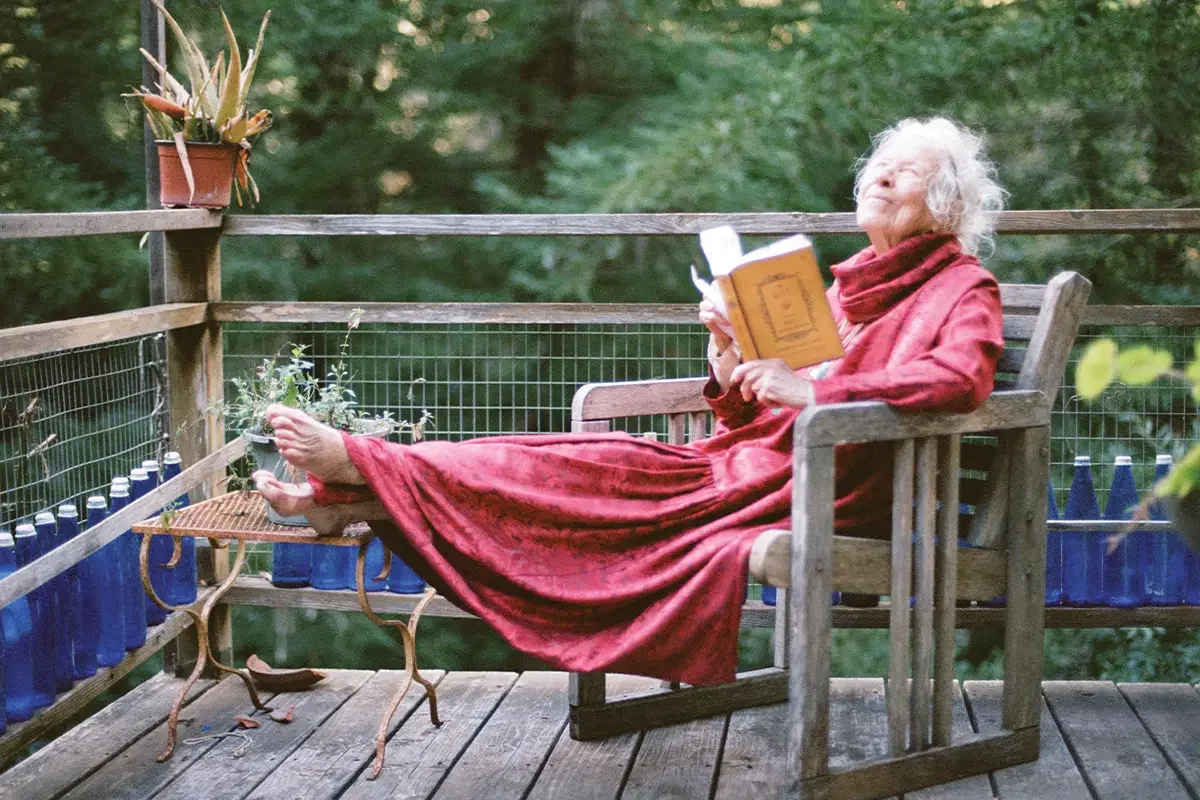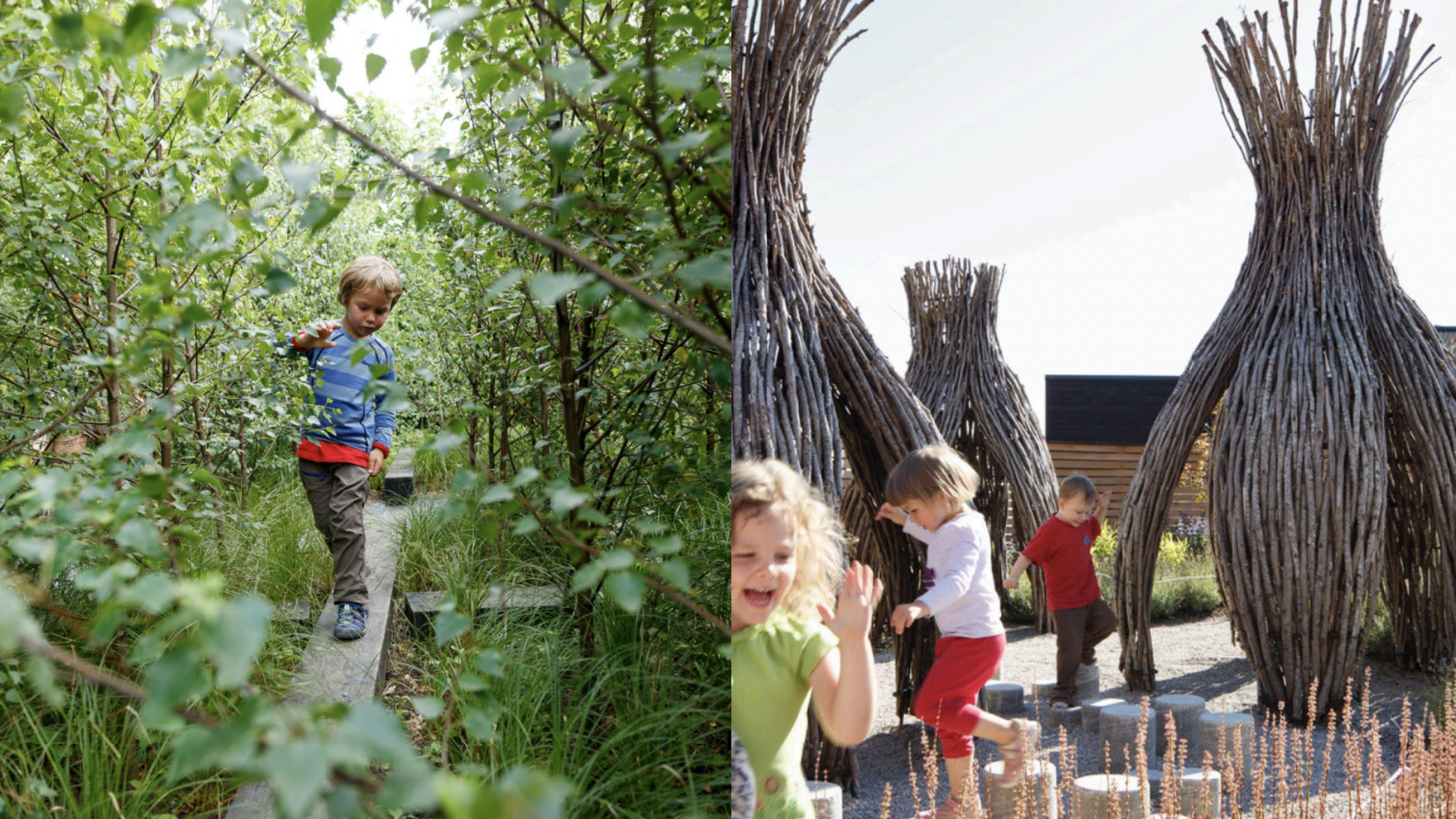Delight in the Unseen: The Art of Noticing
By Celia Lee, adapted from a presentation at the Delight in the Unseen pecha kucha hosted by Perkins and Will as part of Calgary’s inaugural Design Week.
I am very fond of the meme below.
Looking at it always makes me reflect on what humans are capable of. We invoke the sublime with gardens, architecture, art. We create beauty and belonging through everyday artisanship. Since the dawn of our time, we’ve had the privilege of having nature as a mentor - its rainforests, its Great Plains.
Then we do things like… bestow McLeod Trail unto the next generation.
So we thought it only fair to ask kids what they would do instead. What would help them get around on foot or bike in our communities?
The kids gave us design work. They also gave us poetry and philosophy.
Kids have been wowing us for some years with their design work, because of their ingenuity, their empathy and their sense of play. Over the years, they’ve proposed incentivizing snow removal by gamifying it: putting up hockey nets with heated storm sewers inside them to melt incoming snow. Alleyways would house the houseless, streets get turned into parks so seniors have relaxing places to gather downtown.
In short - when we’ve asked kids to help themselves, they consistently respond by helping themselves and others.
In our most recent project, Kids Reimagine School Streets, we asked grade 4 and grade 6 students to redesign their routes to school. Martindale students wanted walking spaces where – crucially - they could listen to the breeze.
““I like to walk because I can see the outside and it’s peaceful, it’s windy, I enjoy it.” ”
““I like biking because you can get the nice breeze on your face.” ”
Alishbah and Sahar are far from alone in their reflections on the breeze over the course of history. Rumi and Hafiz, 13th and 14th century Persian poets whose words remain eerily relevant, have spent their fair share of time communing with it - and encouraging us to give it our attention.
Unseen conversations
Hafiz had been a thread weaving through the summer of 2023 and beyond. Al, a local resident and student had walked by the installation of the kids’ design for Martindale in 2023, and decided to pitch in for several days. During that time he told us he was trying to read as much of the poet’s work as he could over the summer. I shared how a 95-year-old Big Sur resident, Penny, had introduced me to Hafiz that summer by reciting his poetry to me within the first five minutes of our meeting – and (to my horror), bringing me to tears. Like any self-respecting bibliophile, Al thought that was awesome… and that I should really read the poetry in the original Persian.
My favourite contemporary poet is Kaveh Akbar, who says poetry calls us to slow down, focus our attention and have a sensory experience with words.
“What poetry asks us to do is to slow down our metabolization of language. It asks us to become aware of the materiality of language and of the textures of language, and it asks us to become aware of language entering us.”
Martindale Calm Collector Implementaiton, 2023.
Penny.
Owais, a sixth grade poet-at-heart, had similar things to say about walking: walking to school helps you slow down, notice and empathize.
“[Walking] helps people notice their surroundings like - oh that tree doesn’t look that well, and realize how it looks, while cars they move so fast you can’t notice the changes.”
While Sustainable Calgary has focused on designing to encourage walking, the kids point out that walking is in fact a vehicle for noticing; and noticing can influence how we treat each other.
What does that mean for design? It means how we design public spaces has a multitude of unseen ripple effects. When we design for walking, we design spaces that encourage us to notice and help us care - and maybe, through design, we can adjust the dial on noticing and caring.
Philosopher Simone Weil and the poet Mary Oliver align with Owais’ observations, both speaking of the generosity that comes with noticing.
“Attention is the beginning of devotion”
Relatedly, noticing helps us see what we take for granted — what we consider “normal” or “desirable” and what Roland Barthes refers to as our “mythologies” - and also what we’re neglecting. If walkable places nudge us into deeper observation, perhaps they can help us rethink our mythologies and problem-solve more effectively - something Nietsche can certainly get behind.
Challenging what we perceive as normal doesn’t assume “normal” is bad or good. But it is worth checking in on from time to time, if only to ensure “normal” isn’t bringing on the apocalypse.
Anne Carson puts it this way: we shouldn’t outlive our mythologies.
A lot of our work at Sustainable Calgary takes aim specifically at the shared mythology that centres the personal vehicle in community design. Many of us would say we have indeed outlived those mythologies.
We take aim at it from the perspective of health: the way we design our streets affects every facet of our health and happiness. But the kids are nudging us further: centring community design around the car doesn’t just change our health outcomes; maybe it changes who we are and how we treat each other.
“ Tell me what you pay attention to and I will tell you who you are.”
In a car-centred community, it’s normal for destinations to be far apart. Streets are for throughput not connection. We travel separately in “boxes”, and if Matthew McConnaughy is any indication, those boxes make us sexy as hell.
As a girl from the suburbs of Mississauga, I’m far from immune to this story. But to get British about it, it’s evolutionarily maladaptive: a growing dependency on automobiles might just bring on the apocalypse. And to the kids’ point, it’s making us move through the world faster, pay less attention to our surroundings - and maybe empathize less.
Matthew.
The kids we’ve worked with have been subverting mythologies with ease.
Kids may not know or may not yet have bought into commonly held beliefs. The tech industry has taken notice and has been capitalizing on it - because looking at a problem from a different perspective catalyzes innovation. This has certainly been our experience, where kids in three communities independently developed precedent-setting projects that pushed city policy and practice.
In Connaught, students decided they could make their street safer by pairing it with another much-needed community amenity - greenspace. They wanted to turn three blocks into wildflower fields with a pond. Since there’s not much publicly-owned land in the Beltline, this was, in fact, brilliant, if highly unusual.
Rewilding three city blocks also seemed obvious to Lucia, the landscape architecture student we were working with, and to David, the engineering student who took a lead in implementation. We piloted the kids’ idea on one third of a block for three years. Now we’re working towards developing a permanent park.
I took a meeting in the space the other day. As I was sitting there, I actually stopped mid-conversation because I was noticing the sound of the wind in the trees. It wasn’t drowned out by traffic. I noticed the sounds of birds. They were more active here.
I noticed the woman sitting on her walker, talking on the phone, the 20-year old having dinner, and dozens of cyclists and scooter-riders whizzing through, and the elderly man crossing at the curb bumpout, where the crossing distance was shortest. There was no part of me that envisioned this is what the space would become, even in its temporary form.
Planters at the Connaught Open Street.
As we inch towards a municipal election, I’m thinking what this means for city planning. What I see in this work is a rationale for supporting walkable and delightful public spaces - because far from being frivolous, these spaces help us notice, care and problem-solve. They’re a long-term investment in empathy, care, and possible futures.
What I also see in this work is the importance of giving kids and youth a chance to lead, before they unlearn their ability to notice, their instinct for empathy, and their connection to mythologies that serve us better – whether new mythologies, or old ones that better withstand the test of time.
A few more related literary gems:
“All that you touch, You Change. All that you Change, Changes you.”
- Octavia Butler, Parable of the Sower
“The truth about stories is, that’s all we are.”
- Thomas King, The Truth About Stories
“Sit as little as possible; do not believe any idea that was not born in the open air and of free movement — in which the muscles do not also revel.”
- Frederick Nietsche, Twilight of the Idols
Whimsical urban spaces.
Connaught students at work.










